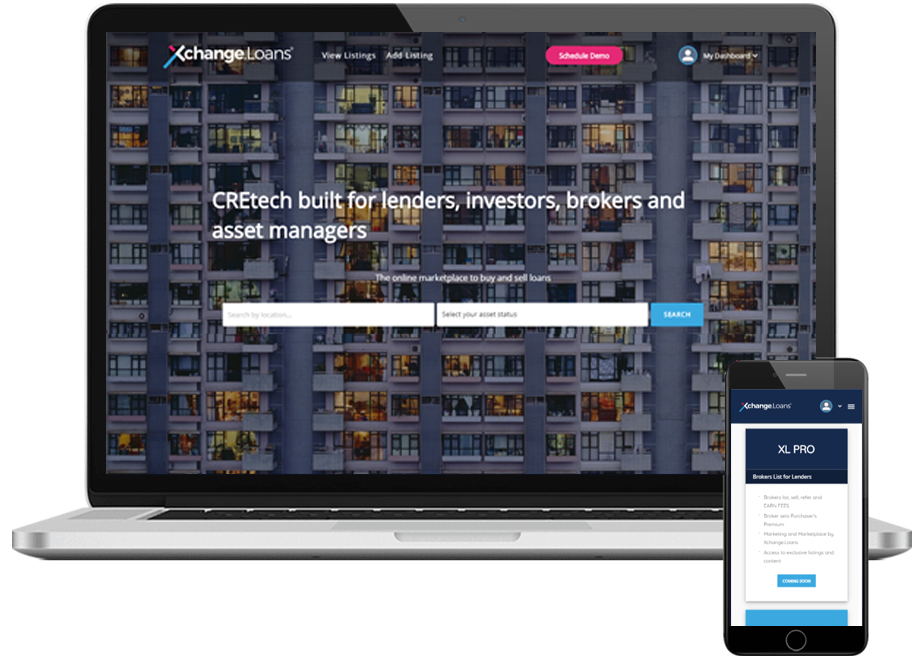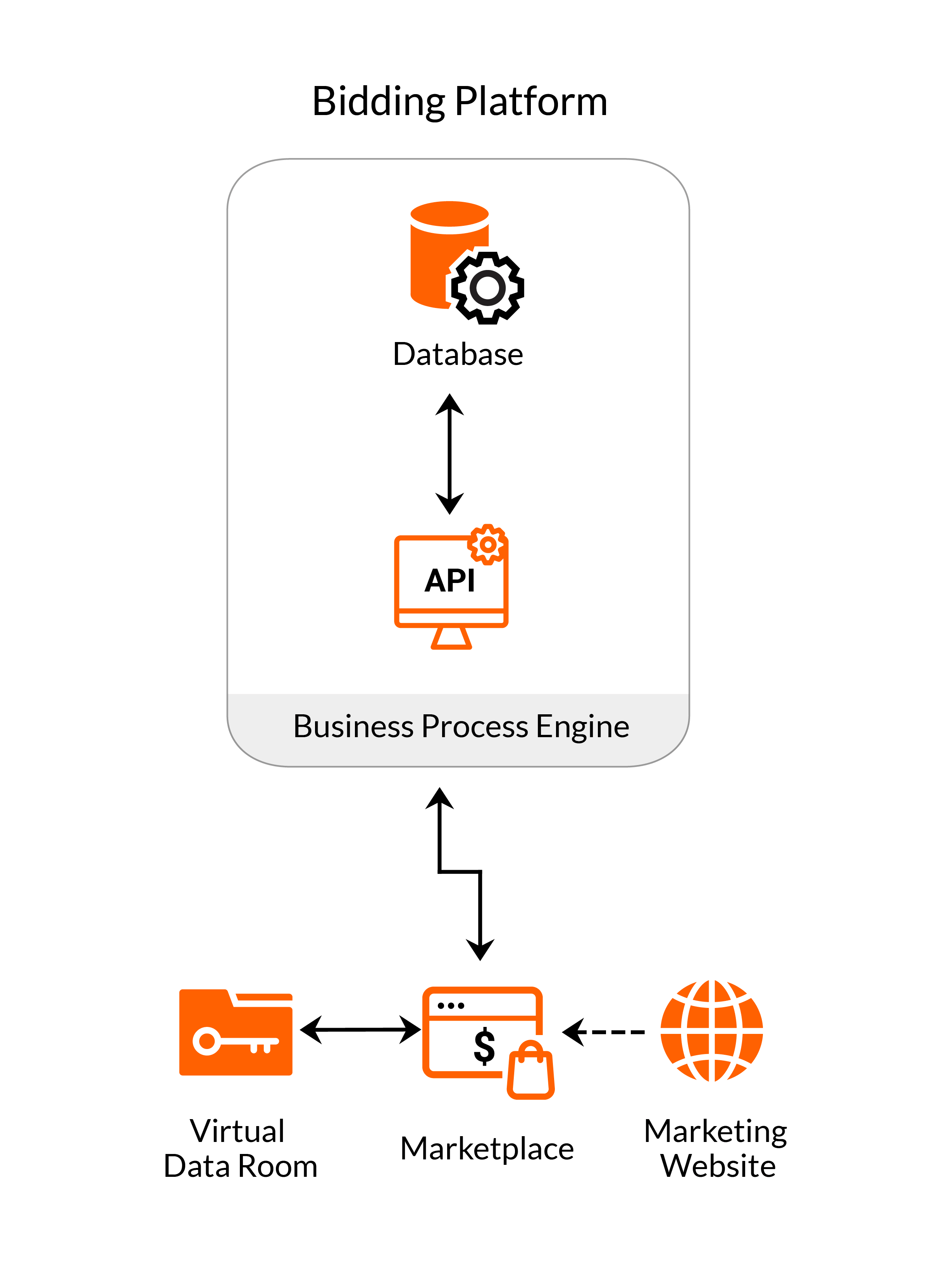Project outline
Rhenium Capital is a consulting and advisory firm based in South Florida, USA. They provide loan sale advisory for nonperforming commercial real estate loans held by the bank and non-bank lenders nationwide. They were interested in creating their own active sales marketplace with easy-to-navigate dashboards, strict vetting processes, and tight security that will assist sellers, brokers, and buyers in closing deals more efficiently.
Solution development

Business analysis
Our business analyst had worked in close cooperation with the client to delineate the key processes: seller and buyer vetting, asset creation, bidding procedure, document generation, notifications, access to the 2-tiered documentation, communication between the users, etc. Since the development of these features required significant time and financial resources, our client decided to divide the project into several stages, developing the core features first.
In order to deliver the initial solution, we focused on the core functionality that is necessary to close the deal efficiently and will bring maximum business value:
- Eye-catching and informative homepage
- User-friendly search and asset listing
- Secure user registration
- Seller approval process
- Buyer approval process
- Asset creation
- Payment integration
- 2-stage bidding process
- VDR integration
- Control of access to each of the tiers
System architecture

Then our team dedicated their time to thoroughly design the system architecture using the most reliable and secure resources. One of the client’s requirements was the scalability of the solution and the opportunity to integrate other marketplaces. So the first step was to include an API that allows other marketplaces to use the same database. As a result, we envisaged a system consisting of several different subsystems:
- The Bidding Platform (API + database) will drive business processes and serve as a point of access to the bidding functionality for Marketplaces.
- The marketplace will serve as an interface offering users access to the main functionality.
- Integration with a Virtual Data Room (VDR) that will serve as a documentation service with the ability to restrict access and gather user activity statistics.
- Marketing Website that will serve as the main source of information about the product and its capabilities, with instructions for using the platform, including registration forms.
The architecture of the solution encompasses a number of Amazon services (Cognito, DynamoDB, S3, Lambda, ElasticSearch, AppSync) that ensured seamless development of each component and their integration. Additionally, in this project, we used Python, Chalice, Terraform, and Robot Framework. UI has been developed with VueJS. Stripe has been chosen as our payment solution. Since the main focus of the project is real estate, Google Maps and Places integration was also required.
The implementation
- Since the assets sold on the marketplace contain sensitive information and have a high cost, it is important to vet all the parties. We designed a simple yet effective process that will allow marketplace administrators to receive information about potential buyers and sellers, check it, and then manually approve or decline them.
- Creating asset includes several different steps that allow to fill in a lot of asset data, including uploading images, adding Due Diligence documentation to the VDR, and paying the asset publication fee.
- Secure storage of the accompanying documentation (Due Diligence) has been ensured by the third-party VDR provider. Secure two-tiered data vaults and strict buyer vetting process protect confidential information.
- Custom bidding flow has been developed to cover all the requirements of this niche. Usually, we offer our clients to choose from a number of different auctions, but it was decided to give more freedom to the seller in this particular case. The bidding process consists of two stages that encourage competitiveness. The marketplace provides the seller with all the necessary information about the buyer and the offer so that they could make a fully informed decision.
- To ensure flawless and unimpeded work of the system, as well as to avoid causing bugs while implementing new functionality, it is important to write automated tests. The more functionality and use cases are covered with the automated tests, the more satisfying user experience will be. We used Robot Framework to add robot tests that test both API and UI and cover all the main scenarios.
In conclusion, within a short amount of time, we were able to develop an e-commerce platform that focuses on the most efficient and secure workflow of selling and buying assets.
Contact us, since the development of superior software solutions is exactly what we do!
